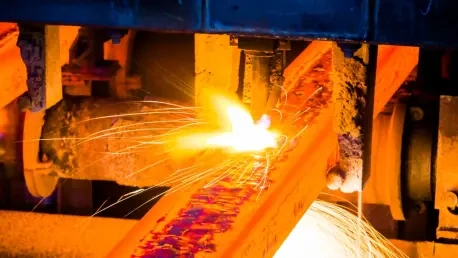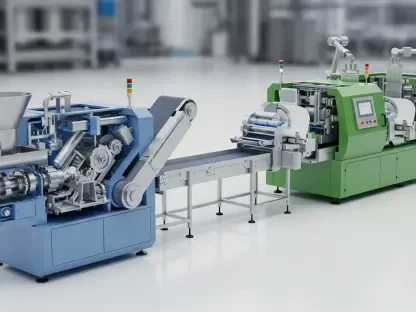In the relentless march towards technological advancement, the elements that visibly capture public fascination often include the sleek interfaces of artificial intelligence, the quiet hum of electric vehicles, and the precise movements of state-of-the-art robotics. However, this sleek high-tech aesthetic relies on a less visible, yet crucial force: engineered metal components. These intangible aspects are pivotal in silently revolutionizing key industries such as aerospace, energy, and defense. These sectors operate under extreme conditions that demand exceptional durability, heat resistance, and corrosion immunity—qualities that conventional materials struggle to provide. Advanced alloys like Inconel and Hastelloy have risen to meet these challenges, offering a richer mix of properties that not only withstand harsh environments but do so while maintaining performance and reducing weight. As sustainability and efficiency have become critical priorities, the exploration and development of precision-engineered metals are becoming central to achieving these goals, marking a shift towards material science as a cornerstone of industrial growth.
Advancing with Precision Metal Components
The evolving needs of industries grappling with severe operational demands are met with precision-engineered metal components. These components address the ever-increasing need for materials that can endure the most stringent conditions, where traditional metals may fall short. The engineering of metals for these applications demands advanced fabrication techniques that maximize the inherent benefits of alloys like Inconel and Hastelloy. Such alloys are notorious for their resilience in high-stress and high-temperature environments, making them indispensable in industries like aerospace, where safety and durability cannot be compromised. These metals provide not just raw strength but also a remarkable balance between weight and robustness. This balancing act is crucial when high efficiency and reduced energy consumption are imperative. Moreover, the adaptability of these metals to custom machining and fabrication ensures that they can be tailored to meet the precise specifications required by cutting-edge technological applications.
Yet, the journey doesn’t stop at merely meeting these challenges. It extends to optimizing the longevity and performance of components. Innovations in machining and fabrication processes fine-tune the structural integrity of these components to maximize their potential while minimizing industrial waste. The push towards cutting emissions, increasing efficiency, and prolonging the life cycle of components drives continuous advancements in material science. As a result, precision metal components are not merely fulfilling a need; they are actively shaping the future landscape of industrial applications by establishing new standards for troubleshooting and efficiency. Consequently, the role of precision-engineered metals transcends traditional perceptions, forming a bedrock for future industrial innovations.
Material Science: A Silent Revolution
As the world keenly watches the progress of digital technologies, an emerging consensus is reshaping the industrial discourse: the next wave of significant advancements will likely stem from breakthroughs in custom-engineered materials rather than digital innovations alone. While artificial intelligence and computing continue to evolve, it is vital to acknowledge the profound impact that material science holds for the future of industries. The intelligent engineering of metals heralds a shift towards sustainable practices by minimizing environmental impact and enhancing productivity. This fundamental change is not a departure from digital transformation but a complementary evolution where material science simultaneously sharpens competitive edges and fosters environmental consciousness.
The importance of this paradigm shift is particularly evident in sectors like energy production, where material endurance and efficiency translate directly into operational successes or failures. The role of engineered metals in building robust yet lightweight solutions results in a significant reduction of maintenance costs and prolongs the lifespan of critical infrastructure. By improving reliability and performance through cost-effective measures, companies can allocate resources to further innovation. Looking forward, the integration of smart engineering and cutting-edge manufacturing practices promises an era where custom-engineered components act as catalysts for unprecedented industrial growth, promising a future that champions technological and material breakthroughs as twin pillars of advancement.
The Path Forward in Industrial Material Science
In the race towards technological progress, public interest is often captivated by the sleek design of artificial intelligence interfaces, the gentle hum of electric cars, and the precise motions of cutting-edge robotics. Despite their striking appearances, this modern high-tech allure deeply depends on something less obvious but equally crucial: engineered metal components. These unseen elements are revolutionizing sectors like aerospace, energy, and defense, which function under extreme conditions demanding extraordinary durability, heat resistance, and immunity to corrosion—qualities that typical materials often fail to offer. Advanced metal alloys, such as Inconel and Hastelloy, respond to these challenges by providing enhanced properties that endure harsh environments while maintaining performance and reducing weight. As sustainability and efficiency grow in importance, the focus on developing precision-engineered metals becomes pivotal in achieving these goals, marking a shift towards material science as a fundamental driver of industrial progress.









